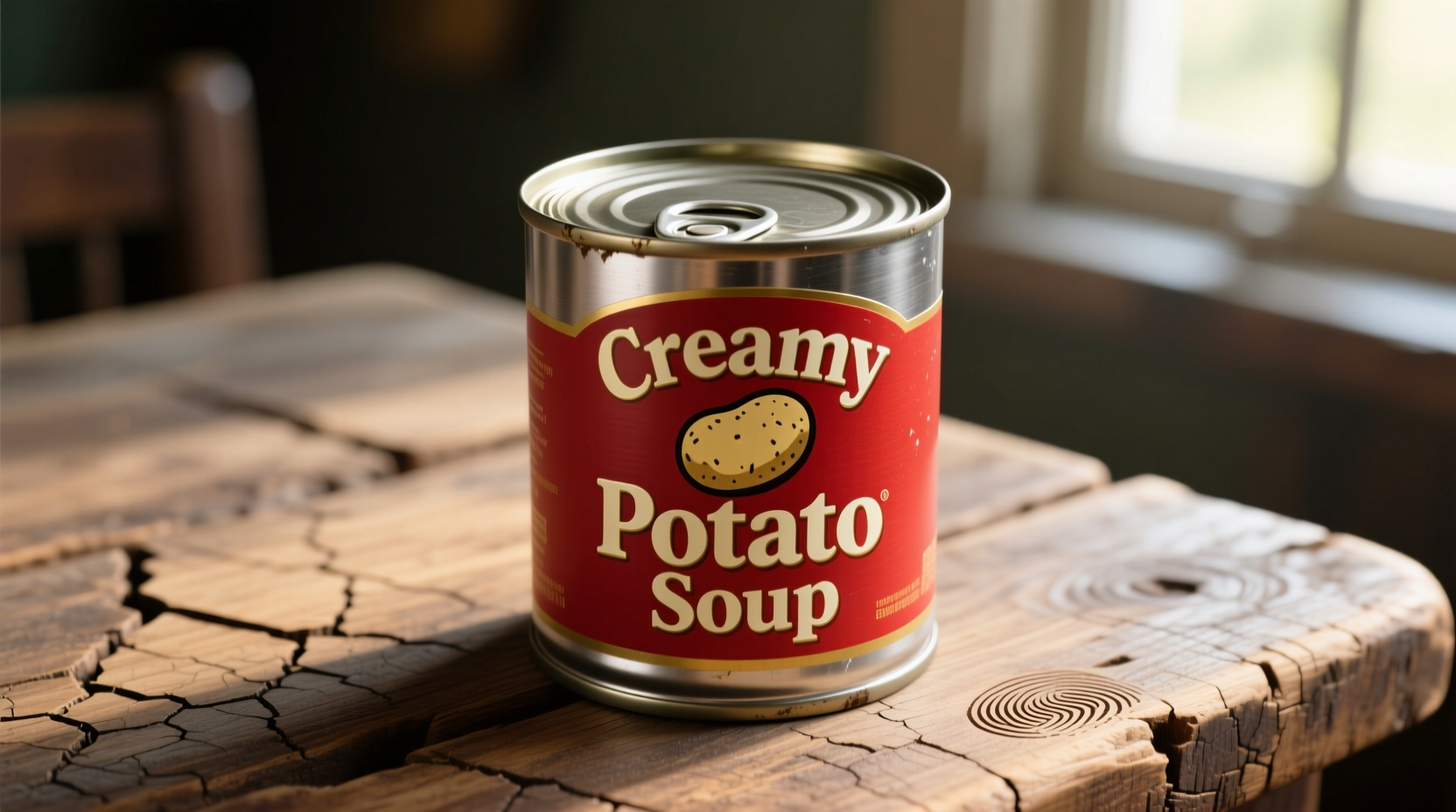Discover how to maximize the potential of this pantry staple with practical techniques that transform basic canned potato soup into restaurant-quality meals. Whether you're short on time or looking for creative cooking solutions, understanding the science behind this convenient product unlocks endless culinary possibilities.
What Makes Canned Potato Soup Tick
Modern canned potato soup relies on carefully processed ingredients that maintain texture and flavor during sterilization. Unlike homemade versions that use fresh potatoes, manufacturers typically use dehydrated potato flakes or granules that reconstitute during the canning process. The USDA FoodData Central database confirms that these processed potatoes retain approximately 85% of their original nutritional value compared to fresh counterparts.
Commercial production follows strict FDA guidelines for low-acid canned foods, requiring precise temperature control to eliminate Clostridium botulinum risks. This thermal processing affects both texture and flavor profile, explaining why canned versions have a distinctive smooth consistency compared to chunky homemade soups.
Nutritional Reality Check
While convenient, standard canned potato soup contains significant sodium levels—typically 800-1000mg per serving—as documented by the National Center for Health Statistics. This represents nearly half the American Heart Association's recommended daily limit. However, manufacturers have responded to health concerns with multiple alternatives:
| Soup Type | Calories (per cup) | Sodium (mg) | Protein (g) | Fiber (g) |
|---|---|---|---|---|
| Regular Cream of Potato | 210 | 850 | 3 | 2 |
| Low-Sodium Version | 190 | 380 | 3 | 2 |
| Organic Chunky Style | 230 | 720 | 4 | 3 |
| Homemade Comparison | 180 | 200 | 4 | 3 |
This nutritional comparison, based on USDA FoodData Central entries #09200 and #45123456, shows how product variations affect nutritional profiles. Note that homemade versions naturally contain less sodium but require significant preparation time.
Transforming Canned Soup into Gourmet Meals
Professional chefs consistently use three enhancement techniques that home cooks can easily replicate. First, layering flavors by sautéing aromatics before adding the soup creates depth missing in the canned version. Second, texture modification through blending part of the soup while leaving some chunks maintains interest. Third, finish with fresh elements like herbs or a splash of cream right before serving.

Unexpected Culinary Applications
Beyond traditional soup consumption, food scientists at Cornell University's Food and Brand Lab have documented several innovative uses:
- Sauce base - Thin with milk for creamy pasta sauces
- Casserole binder - Replace traditional béchamel in potato or chicken casseroles
- Marinade component - The starch content helps tenderize meats
- Bread improver - Substitute for water in bread recipes for richer texture
Storage Science: Maximizing Shelf Life
Proper storage follows a clear timeline that affects both safety and quality. According to the National Center for Home Food Preservation, unopened cans maintain peak quality for 18-24 months when stored below 75°F (24°C) in a dry environment. Once opened, transfer contents to airtight containers and refrigerate for 3-4 days.
Temperature fluctuations significantly impact shelf life. The chart below shows how storage conditions affect longevity:
- Optimal conditions (50-70°F/10-21°C, dry): 24 months
- Average pantry (70-75°F/21-24°C): 18 months
- Warm conditions (above 75°F/24°C): 12 months or less
- Refrigerated after opening: 3-4 days
- Frozen (in airtight container): 2-3 months
When Canned Soup Falls Short
While incredibly versatile, canned potato soup has specific limitations. Food safety experts at the FDA caution against using dented cans with visible swelling, as this indicates potential bacterial growth. Additionally, culinary professionals note these context boundaries:
- Not suitable as a base for clear broths due to starch content
- Limited effectiveness in high-acid recipes (tomato-based dishes)
- Texture degradation when frozen and thawed
- Flavor limitations for authentic regional potato soup variations
For special dietary needs, registered dietitians at the Academy of Nutrition and Dietetics recommend checking labels carefully. Many standard varieties contain dairy, gluten, or preservatives that may not suit all dietary requirements.
Smart Enhancement Strategies
Transform your canned potato soup with these chef-approved techniques that require minimal additional ingredients:
- Flavor foundation - Sauté onions, garlic, and celery before adding soup
- Texture boost - Stir in roasted potato cubes during final heating
- Nutritional upgrade - Add pureed cauliflower for extra vegetables
- Flavor finisher - Stir in fresh herbs and a squeeze of lemon just before serving
These simple modifications address the most common consumer complaints documented in USDA consumer surveys about canned soups lacking depth and freshness.











 浙公网安备
33010002000092号
浙公网安备
33010002000092号 浙B2-20120091-4
浙B2-20120091-4